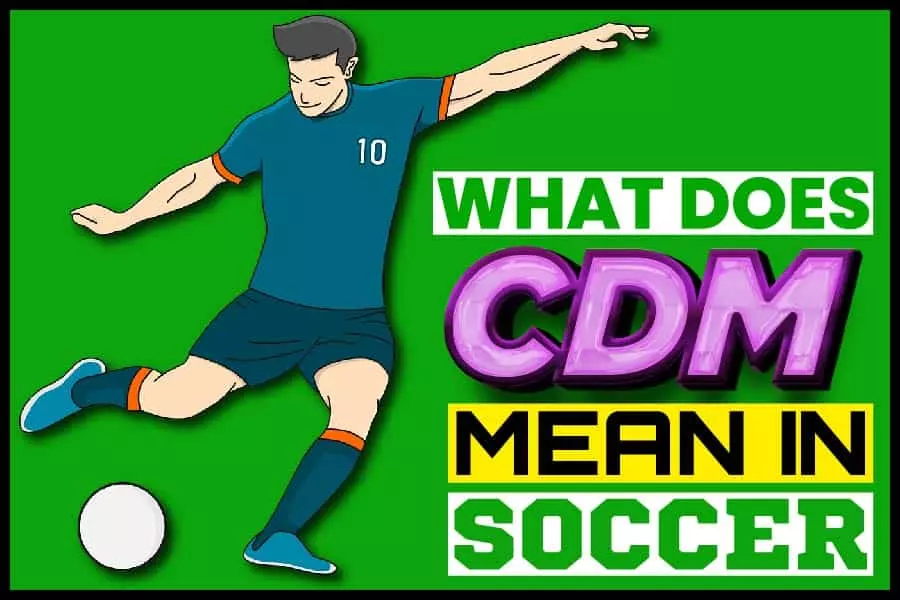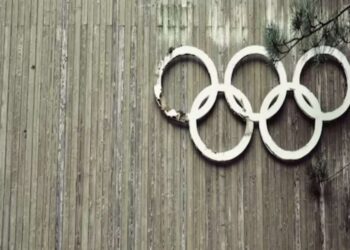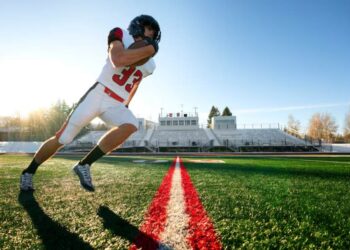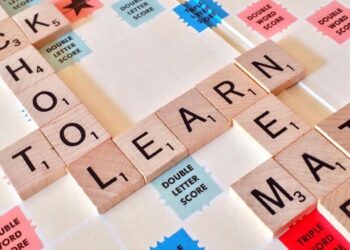Being a soccer player is complex, and it takes a lot of hard work to get good at the sport. Many skills need to be mastered to become a great player. One such skill is understanding what CDM means in soccer.
This may seem like an easy concept for anyone who plays or watches soccer regularly, but plenty of people out there do not know! If you’re someone who has been wondering what CDM stands for, then this blog post will answer your questions about this term.
What Does CDM Mean In Soccer?
CDM stands for “central defensive midfielder.” The central midfielders are responsible for stopping attacks and building them out of defense. The CDM is usually the player who possesses the best skills in ball control, tackling ability, vision, creativity on offense. Still, they also have to be good defensively so their team doesn’t get outnumbered on defense.
Also, the CDM is usually one of the more creative players in a team that helps them contribute to offense by making plays and scoring goals, whether with their feet or head. They also pass well so that they can get teammates into good positions for shots on goal. As mentioned before, this player needs to be a good defender, which is done by tackling and intercepting the ball from opponents.
A CDM plays in the center of midfield and acts as a “conductor” for his team’s rhythm. They should be technically sound, comfortable on the ball with good vision and positioning to break up attacks or play their teammates into space.
A CDM is responsible for protecting their team’s backline, distributing passes to teammates in good scoring positions, winning tackles and aerial duels, as well as holding possession of the ball until more attacking players join them. It is not an easy role by any means! Although they do not score goals, their contributions are just as crucial to the team’s success.
What Are The Attributes Of A Good CDM?
- A good CDM is tough and can win tackles, as well as intercept passes to stop attacks from developing or continuing down the field.
- They should be tireless workers that cover a lot of ground on the pitch throughout 90 minutes (or more). This means they should be able to get back into position quickly if the ball is lost or get forward and join attacks.
- Good stamina means they can keep running for an entire match without getting tired quickly.
- They also have an excellent vision so that they are often looking at what’s going on around them, both in front of them and behind them. This means they are aware of the positioning, movements, and runs being made by their teammates and those from opposing teams.
- They need to be able to quickly assess what’s going on all around them so that they can make good decisions about where to pass, how best to help their team avoid losing possession, or how to start a counter-attack.
- They should be good passers who have the vision and awareness to see opportunities for passes downfield or into space that their teammates can run onto. An example of this would be if a winger is making an overlapping run. A pass played in behind other defenders could allow them to potentially get forward and have a good chance at getting in the box, or they could get themselves into goal-scoring opportunities.
- A good CDM can also score goals themselves, as they will be involved in a lot of attacking play and can get into a position to take shots.
- They must read the game to succeed in this position. They must try to break down the opposing team’s strategy in the midfield zone, which is frequently tested. They must fill the gaps in the midfield area.
How Do You Play As A Cdm?
Here are some top tips for the central defensive midfielder:
- Be the first line of defense. Your job is to prevent your opponent from scoring, so you must be very hardworking and dedicated.
- Make sure that you are always in position. There should never be space between yourself and another player on the field because this creates gaps where opponents can move through easily.
- Mark your opponent tightly. The best way to prevent them from scoring is to take away their space to not shoot.
- Stay calm. When you are under pressure, it is easy to lose your cool and make a mistake, so stay focused on the game at all times.
- Be an excellent passer of the ball. You must be very accurate with your passes because this will move your teammates upfield towards the goal.
- Never dive in to tackle unless you are sure that you will get the ball. Diving is a waste of time and energy.
- Guard your backline closely at all times, particularly when an opponent has possession of the ball because this is when they have their best chance of scoring. This means staying close enough to them so that they cannot shoot.
- Be a leader on the field and encourage your teammates even when things get tough. Stay positive at all times because this will boost morale and help you to perform better.
- Exercise regularly in order to stay fit. Being physically strong is important for any player, but it’s particularly beneficial for central defensive midfielders because it helps them win the ball back from opponents.
- Keep your hair short or tied up when you are on the field so that it doesn’t cause any problems with communication! An opponent may use your long hair against you by pulling on it, slowing downplay, and making communication difficult. A shorter haircut will allow for more accessible communication on the field.
- Stay focused and never lose concentration. This is especially important when marking your opponent, as it can be easy to let them slip away from you if you aren’t careful.
Types Of Defensive Midfielders In Soccer
Holding midfielder (defensive)
A holding midfielder is a player who plays in between the defense and offense. They are mainly responsible for protecting their defensive line from being breached by attackers, intercepting passes, or even tackling the opponent to gain back ball possession. Holding midfielders often work as central defenders when their team does not have control of the game and needs to sit more profound on the field.
Box to box midfielder (midfielder that covers a lot of ground)
The term box to box midfielder is often used when referring to a player that plays in the center of the pitch. Because this position usually involves playing both offense and defense, they are often referred to as midfield generals or central midfielders. The other standard terms for this type of player include central mid-fielder (CMF), defensive midfielder (DM), central midfielder (CM), and defensive midfielders.
A box-to-box midfielder covers a lot of ground on the field. This role can be fulfilled in modern-day soccer formation by an attacking or defending central midfielder (CM). A CM’s job is to break up attacks from their opponent and then transition their team into attack.
A holding player is usually the most defensively oriented CM on a team with responsibilities to mark opposing players in their pitch area. Ideally, they will keep possession of the ball and either create an opportunity for their teammates or take a shot on goal.
The defensive midfielder is responsible for marking opposing players, intercepting passes from opponents, tackling the opponent to gain back ball possession. They are usually placed in front of defense when playing with three CB’s, but if there are only two CB’s, then a defensive midfielder will be put in front of them.
Attacking midfielders/Goal-scoring midfielders
An attacking midfielder is a soccer position where the player is primarily responsible for creating goal-scoring opportunities and scoring goals themselves. Their responsibilities can also include helping teammates score as well as focusing on making the final pass before a shot on goal.
These attributes make an attacking midfield role one of the most critical positions in soccer, which means that those who play it are extremely valuable to their respective teams.
Conclusion
In summary, a CDM plays a vital role in the soccer team. The player should be able to tackle and defend well as well as intercept passes and create opportunities for their teammates.
A good CDM can help maintain possession of the ball by keeping it away from opponents and making calculated decisions on when to pass the ball due to their knowledge of where other players are located on the field at all times during play.
They also need to have a great vision, to know what’s happening around them at all time-this includes knowing what type of midfielder each opponent is playing, which will allow you to prepare ahead of time for how best to defend against that specific player’s style. This information should give you enough tips about this position to understand your soccer.







